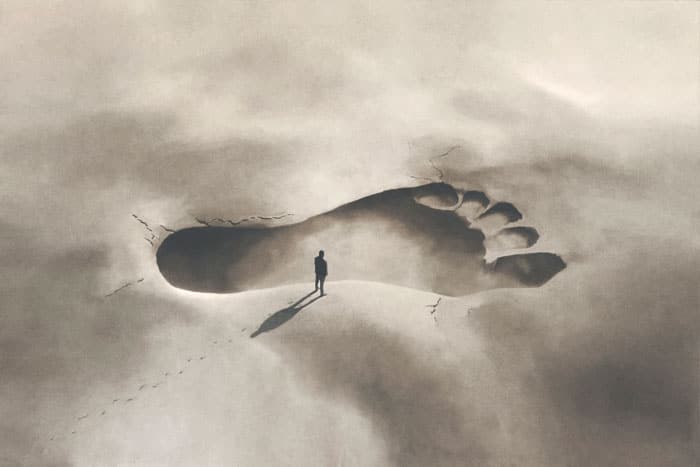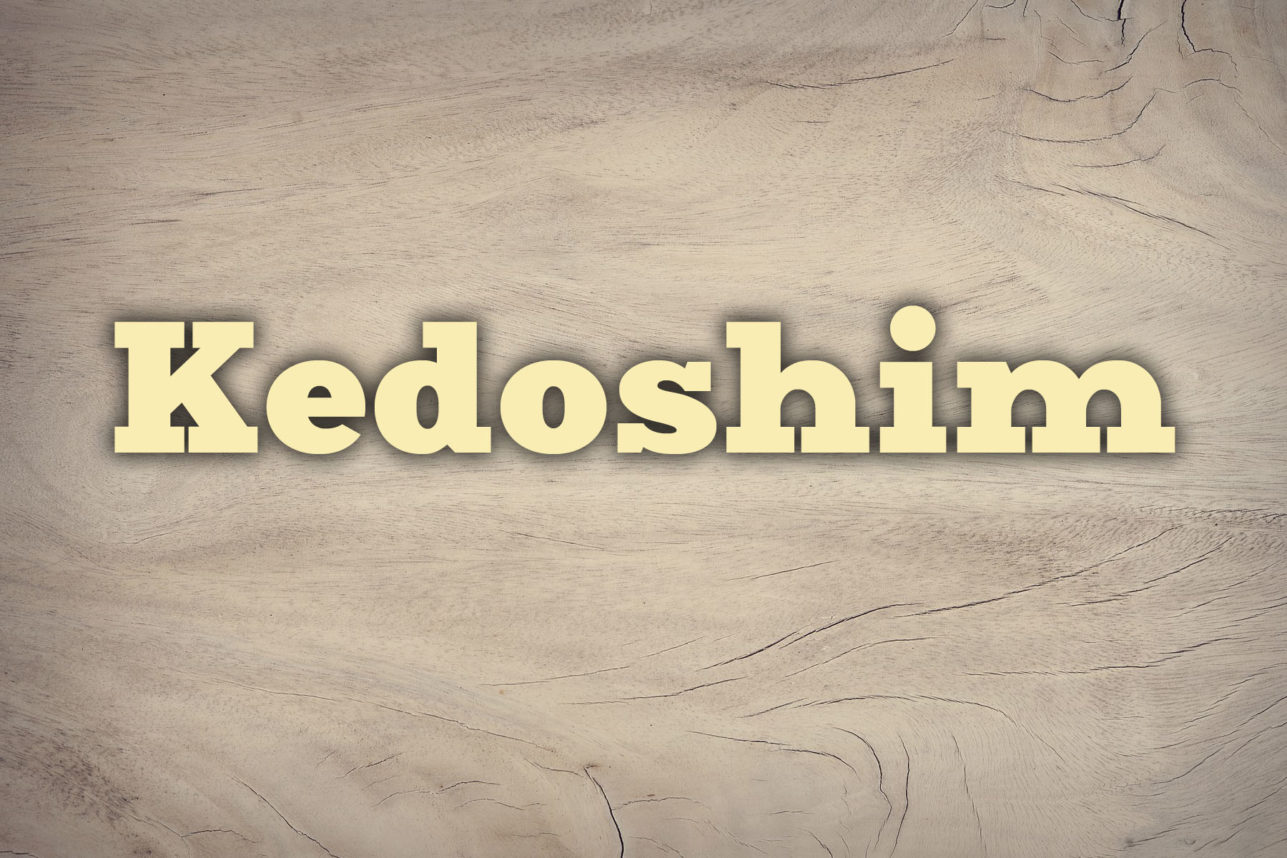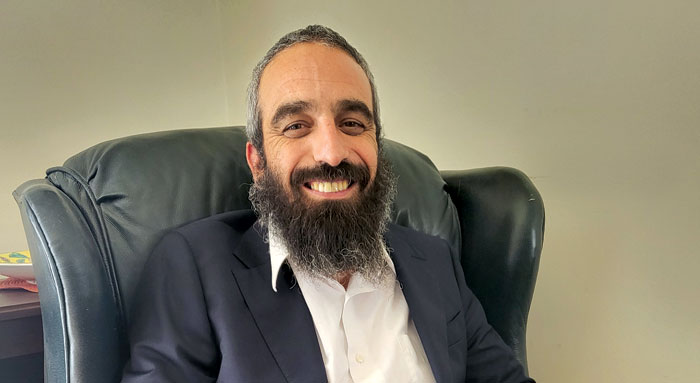 francescoch/Getty Images
francescoch/Getty Images Those interminable after-movie credits will soon be a thing of the past. After all, no need to list the names of countless stars, supporting roles, bit players, and endless extras when Sony, Universal and Paramount hire “Machine Learning Platform Product Managers” at $900,000 salaries to crank out the latest blockbuster using AI. With actors’ faces being inserted at the push of a button into entire universes of films they never physically filmed a scene in, resistance to the machines is futile. A digital twin of Bruce Willis has already starred in a Russian telecom company commercial.
While the recently reached writers’ deal scored some points protecting their rights, actors will have an even harder time navigating our era of flawlessly designed doppelgangers, deep fakes and ChatGPT-composed screenplays. For those of us cinephiles watching from the sidelines, it’s worth noting that Judaism’s ancient rabbis considered the implications of the same character appearing in wildly different contexts long before their coreligionists dreamed up Hollywood.
Think Patton Oswalt’s imagined throwdown, on that classic episode of “Parks and Recreation,” between “Robot Chewbacca,” Wolverine and the Fantastic Four (which no doubt real-life Disney will one day produce) would be epic? Have a look at what the rabbis did with Og.
A mythical figure associated with death in the ancient world, Og shows up in the Hebrew Bible toward the end. The king of a pagan people known as the Bashanites, he and his army were defeated in battle by Moses and the Israelites on the cusp of the Promised Land. The Bible, not usually inclined to describe its characters’ physical appearances, tells us that Og was a man of ample proportions, and that “his iron bed was nine cubits long and it was four cubits wide.” Og, simply put, was a giant.
Picturing the scene of Moses taking on a towering titan in a desert battle sparked the rabbis’ imagination. So, circa 200 CE or thereabouts, they gathered in a writers’ room, no doubt well-stocked with the ancient Babylonian equivalent of Diet Coke and pretzels, and decided to riff a multiverse of giant-sized cameos. And they didn’t stop riffing for around a thousand years.
“Well, weren’t there giants in the time before Noah’s flood?” one sage threw out to the group. “Genesis chapter 6 does mention some mighty superhuman beings,” replied another. “What if we inserted Og in Noah’s story, even though it took place centuries before Moses was born?” said a third.
And away they went.
Og clung to the side of Noah’s ark during the flood, the Talmud tells us. Though God was raining down boiling water, the side of the boat miraculously cooled, allowing Og to eventually emerge unscathed on dry land. The midrashic collection Pirkei deRebbe Eliezer, in an alternate rendering, has Og sitting down on a piece of wood under the gutter of the ark, fed by Noah’s family after pledging them his undying loyalty. The medieval sage Rashi records yet another survival scene: Og ran to Israel, the land of God’s protection, which was divinely spared from the flood.
Fast forward a few chapters in Genesis, and Abraham replaces Noah as the Bible’s main character. Wouldn’t you know it, Og pops up again in a supporting role. Eliezer, a servant of Abraham mentioned in the text, in the rabbis’ creative retelling, had a secret identity. He was actually Og. As Masechet Sofrim tells it, Og was so tall that:
he could hide Abraham’s feet in the palm of his hand. Once he was rebuked [by Abraham] and from fright his tooth fell out. Abraham picked it up and made ivory beds of it in which he slept. Others say that he made of it a chair which he used all his life. Who gave [Og] to Abraham? Nimrod [the king of Nineveh, who, in another rabbinic story, threw Abraham into a fiery furnace to test his faith]. Og went and built sixty cities, the smallest of which was sixty miles high, as it is stated, “Threescore cities, all the region of Argob” [Deuteronomy 3:4]. And what did he eat? A thousand oxen and the same [number of] other animals, and his drink consisted of a thousand measures.
“But wasn’t Eliezer the loyal servant who found Abraham’s son Isaac a wife?” chimed in one of the sages. “Of course,” came the reply. “And as a reward for making this match, he was set free and promoted to King of Bashan.”
Rabbi Yochanan wasn’t feeling it. He insisted that Og wasn’t Abraham’s servant. Rather, he was the unnamed refugee who emerged from a battle between four kings and five kings in Genesis chapter 14. Abraham’s nephew Lot was taken captive in that conflict. It’s an anonymous palit, “one who was saved,” whose recounting of what occurred spurred Abraham to rescue Lot from his captors.
Maybe “Og” wasn’t even his real name, suggested Reish Lakish. Maybe his name really was Palit. When the refugee desperately fled to Abraham, he found the patriarch in the midst of baking matzah cookies (in Hebrew, ugot matzot). “Og” became the escapee’s nickname.
The rabbinic writers of Devarim Rabba thought Og had less than positive intentions in running to Abraham. He actually wanted Abraham to head into battle and lose. This way, Og himself could marry Abraham’s beautiful wife, Sara. Alas, Abraham actually won the battle and rescued Lot.
Abraham and Sara then had a son, Yitzchak, for whom they threw a birthday party. Who was invited? Og, of course. But he was a bully. So God swore that Og would eventually be defeated by Abraham’s offspring. As the midrash describes this particular plot thread:
Og was there. At that time, they [the other party-goers] said to Og, “did you not used to say, “Abraham is like a sterile mule and he cannot generate offspring?” When Og saw Isaac he said “what is this? This is nothing, if I were to put my finger on him [Isaac] I could crush him. God said to Og “You say thus, you will witness a thousand thousands and myriads of myriads going out from Isaacs’s descendants! And your end will be none other than to fall into their hands.
Let’s cut Og some slack, suggested another ancient scribe. While his intentions and manner were less than ideal, Og did after all stir Abraham to save Lot. As a reward, Og merited living a very long life, albeit one that ended with him eventually being killed by Moses.
Og’s lengthy days must have brought him to Pharaoh’s palace in Egypt, came the suggestion. When Jacob, Abraham’s grandson, reunited with his long-lost son Joseph and appeared before Pharaoh, Og was serving as an advisor to the monarch. Upon seeing Jacob and the seventy members of Jacob’s family who had come down to Egypt, Pharaoh teased Og. “Weren’t you the one who said Abraham was sterile? Now I’m looking at seventy members of his family!” A simmering Og then plotted his revenge against Abraham’s descendants, bringing us to the fateful battle with Moses and the Israelites mentioned in the Bible.
Of course, this long-awaited battle-royale wasn’t your typical sword vs. shield skirmish. It put “Game of Thrones” to shame. It began with Moses, in the Israelites’ desert battle camp, rubbing his eyes and squinting in the dust-cloud filled morning. “I do not know what it is that I am seeing, for it appears that these enemies built another wall during the night!” Moses said to God. To which God replied: “Moses! This that you see is really Og sitting on top of the wall!” The scene then continued:
Rabbi Yochanan said: the length of [Og’s] legs was eighteen cubits. At that time Moses became fearful. God said to him “Do not fear for I will cause Og to fall before you.” During their battle, Og would uproot a mountain and throw it onto Israel, and Moses would take a small stone and recite the Ineffable Name over it, and with it he would support the mountain and prevent it from falling upon Israel.
As if wall-climbing giants heaving mountains that were stopped mid-air by pebbles powered by God’s holy name weren’t enough, the Talmud adds more. Moses was finally able to defeat Og because of … bugs. As Og lifted up another mighty mountain, God sent a swarm of grasshoppers that swiftly burrowed through its middle. The now bagel-shaped mountain dropped onto Og’s head. His teeth thrust into its side. While Og was struggling to get unstuck, Moses took an axe ten cubits long, leaped ten feet into the air, struck Og in the ankle, and killed him.
Og, that survivor of flood and war who had wandered from Israel to Egypt to Bashan, a king who towered over friend and foe alike, had finally met his match in Moses.
But the rabbis weren’t done with inserting Og where you least expect him. In a scene straight out of a Tim Burton dreamscape, Rabbi Yochanan, that third-century sage cited earlier, recounts in the Talmud: “I was once a gravedigger. On one occasion, while pursuing a deer, I entered the thigh bone of a corpse and pursued it for three parasangs but reached neither the deer nor the end of the thigh bone. While I returned, I was told that it was the thigh bone of Og king of Bashan.”
The rabbinic renderings of Og should serve as a helpful guide to those composing the coming generation of screen content.
Whether you’re a computer scientist programming a Netflix algorithm to produce the next hit series or a digital graphics wiz de-aging Mark Hamill so that Luke can star in Star Wars Episode XXVIII on Disney Plus, don’t lose the plot. The rabbis, even with their creativity running wild, always stayed true to the characters’ essence. Og’s placement at Isaac’s birthday party is an acknowledgement of Abraham and Sara’s biblically attested hospitality to strangers and friends alike. Og hanging out with Pharaoh serves as a fitting bonus deleted scene, consistent with the Exodus story tracing the Israelites’ emergence from Egypt to the cusp of Canaan, where they encountered Og’s troops, as described in the book of Numbers. That bit about Og’s teeth stuck in a mountain’s rim? To the rabbis, it was the fulfillment of the third chapter of Psalms’ praise of God, “You break the teeth of the wicked.” Creativity need not require compromising a canon’s internal consistency. As the wise ancient sages might have put it, don’t jump the shark.
Even studios insisting on saving human wages by computerizing their cast can still benefit from the rabbinic storytelling method. Og finally being felled by a wound to his ankle sounds straight out of the Greek tale of Achilles struck down by a wound to his heel—because it likely was. A sixth century BCE Phoenician coffin inscription refers to Og as the protector of the underworld, a probable influence for the Talmudic tale of Rabbi Yochanan. The rabbis understood that creative artistry benefits from incorporating a range of diverse influences from folks of different backgrounds.
Finally, the best told tales will always come from the heart, not machines.
Finally, the best told tales will always come from the heart, not machines. To the rabbis, Og’s many manifestations were more than an amusing series of “What ifs.” They were an extended testament to the belief that while the Jewish people would be faced throughout their history with towering forces seeking their destruction, God would ultimately provide their salvation. When Cecil B. DeMille filmed the original, silent film version of The Ten Commandments in 1923, he cast 250 Orthodox Jewish immigrants who had recently arrived in LA from Eastern Europe. As they, in ancient Israelite costumes, walked past 35-foot-tall statues of the Pharaoh and 21 five-ton plaster Sphinxes on set, they spontaneously shouted “Father of Mercy” and “Hear, O Israel, Lord our God the Lord is One.” As a Hollywood columnist named Jack Jungmeyer recounted, “This was not in the script, not in rehearsals. Here was something flaming from the heart of a people.” An older extra told Jungmeyer: “We know this script—our fathers studied it long before there were movies. This is the tale of our beginnings. It is deep in our hearts. It’s just like living in dem times when we got the Torah, an’ now we’re going to get it all over again in a picture by Mr. DeMille.” Try replicating the look on those extras’ faces with Artificial Intelligence.
To the rabbis, Og’s many manifestations were more than an amusing series of “What ifs.” They were an extended testament to the belief that while the Jewish people would be faced throughout their history with towering forces seeking their destruction, God would ultimately provide their salvation.
While studios, actors and writers continue to wage their own epic battle, all parties would be wise to remember the rabbinic riffs on Og. Balancing consistency with creativity, ensuring a diverse set of influences, and emerging from the unexpendable fountain that is human feeling, his stories’ lessons remain timeless. Now if only there was a studio out there looking for a giant-sized pitch.
Rabbi Dr. Stuart Halpern is the Senior Advisor to the Provost and Senior Program Officer of the Straus Center for Torah and Western Thought at Yeshiva University, and the editor of “Esther in America” (Maggid Books).























 More news and opinions than at a Shabbat dinner, right in your inbox.
More news and opinions than at a Shabbat dinner, right in your inbox.